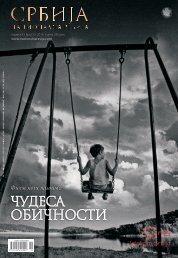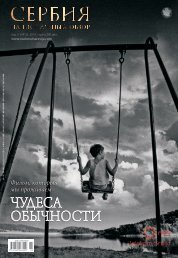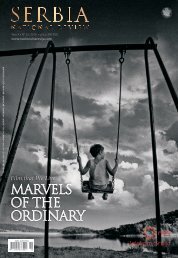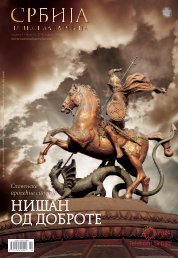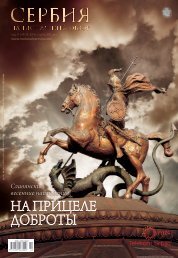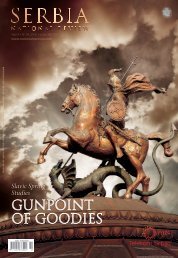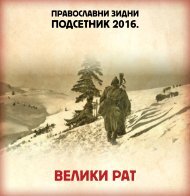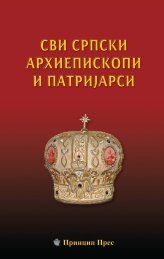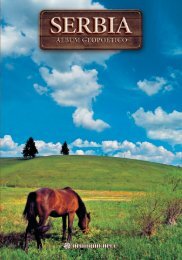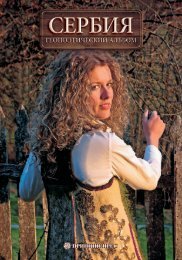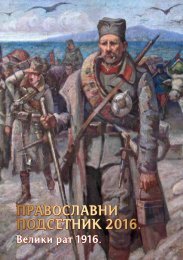Monografija - prvo izdanje - niska rezolucija
Create successful ePaper yourself
Turn your PDF publications into a flip-book with our unique Google optimized e-Paper software.
that naïve art originates from this land – paintings by those<br />
who weren’t painters, derived from still fresh sources that inspire<br />
the “soul of the people”, smelling still like “flowers and<br />
herbs”, even on the paintings, conveying the best that is hidden<br />
“deeply in people”.<br />
In the same way our naïve painters impressed the world,<br />
the music of the brass bands from Guča confused the world during<br />
the last decade. (When Miles Davis, one of the greatest jazz<br />
musicians in the world, heard the “Serbian trumpet” he said: “I<br />
never imagined you could play the trumpet that way”).<br />
Both phenomena are similar to each other. Self-training.<br />
Village. Soul of the people. A talent instead of education. Distance<br />
and isolation from the world’s art and music tendencies.<br />
Weak education (“My schoolbooks – those are my fields, my<br />
books, that is my life, says Vukosava Andrić). Reliance on the<br />
environment’s spiritual tradition. A sense of ethnic origin.<br />
Tradition as an inspiration. Universality that one reaches<br />
diving into the local. Honesty. Emotion. Originality. Threat of the<br />
commercialisation. Danger of falling into a mannerist, folklorist<br />
stereotype. Spontaneous group organisation, the so-called brass<br />
or painting “schools” (which is not only of practical importance,<br />
but testimony of common people’s feelings, who stand out from<br />
the rest only with their “God-given” talent, that art isn’t only<br />
about individual efforts and personal affirmation, rather its about<br />
a collective testimony, understanding of the collective fate and<br />
expression of the collective awareness, where there is not much<br />
room for “creative vanity”).<br />
In the shadow of Suvobor Mountain, the poet Obrad<br />
Vasiljević from the village of Pranjani wrote in a self-descriptive<br />
verse the slogan “essentially barefoot”.<br />
In Serbia, the first “essentially barefoot” painter was<br />
probably Janko Brašić from Oparić, who had his first exhibition in<br />
1937 in a primary school classroom and which was noted down<br />
by newspapers.<br />
After the war, Janko gathered the painters from his<br />
Од фолклорног маниризма „сеоске наиве”, преко минуциозног<br />
и технички савршеног „наивног реализма” Саве Стојкова,<br />
до аутентичне „апстрактне” фантастике Илије Башићевића<br />
- Босиља: Босиљ „Свети Ђорђе убија аждају”<br />
From folklore mannerism of “the Rural Naïve”, through minutiae<br />
and technical perfection of the “Naïve Realism” of Sava Stojkov<br />
to the original “abstract” fiction of Ilija Bašičević-Bosilj<br />
Bosilj “Saint George kills the dragon”<br />
274<br />
area, the so-called “school of Oparić”. He was there in 1960<br />
when the Gallery of Self-taught painters was founded in Jagodina.<br />
Today it is the Museum of Naïve Art. The first paintings<br />
collected in the museum were works by Janko Brašić and by<br />
other painters from the “school of Oparić”. (Almost all examples<br />
of the naïve art painting style printed in this book are in<br />
that gallery’s possession).



